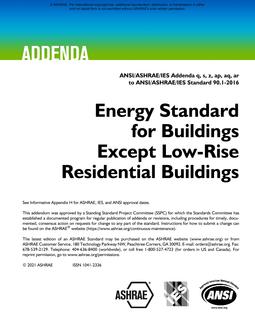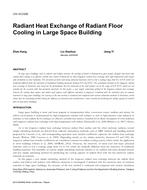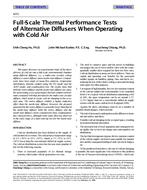A performance model of series fan-powered terminalunits (FPTUs) was developed by combining individualcomponent models of the heating coil, fan/motor combination,and mixer using a basic mass and energy balanceapproach. The fans and motors for the FPTUs were modeledas a combined fan/motor assembly based on prior publishedwork (O’Neal 2015; O’Neal et al. 2015a, 2015b). All the fanmotors were electronically commutated motors (ECMs) andcovered a range in size from 0.333 to 1 hp (248 to 746 W).The fan/motor combinations in the FPTU could vary airflowto the zone to meet variation in the zone loads. Two controlapproaches in cooling mode operations were modeled; bothapproaches provided for control of high enough supply airtemperature at high cooling loads to eliminate condensationon registers and at low cooling loads to prevent colddrafts in the zone. One control approach linearly varieddischarge temperature and the second linearly variedprimary airflow over the cooling range of the zone. Bothalgorithm eliminated the need to iterate in each simulationtime step to obtain a solution for the supply airflow. Theperformance models were prototyped using EngineeringEquation Solver. Sample calculations were provided overthe entire expected operating range of heating, cooling, anddead band in field applications, along with a step-by-stepexplanation of the necessary equations needed for the modelimplementation. The model can be used to estimate theenergy consumption in a variable-air-volume system thathas variable-airflow series FPTUs. The modeling methodologycan be used directly to improve current building simulationprograms that do not allow for estimating the energyuse of variable-airflow FPTUs.
Citation: 2018 Winter Conference, Chicago, IL, Technical Papers
Product Details
- Published:
- 2018
- Number of Pages:
- 11
- Units of Measure:
- Dual
- File Size:
- 1 file , 1.8 MB
- Product Code(s):
- D-CH-18-003


